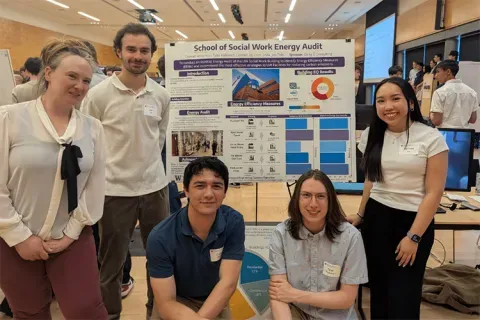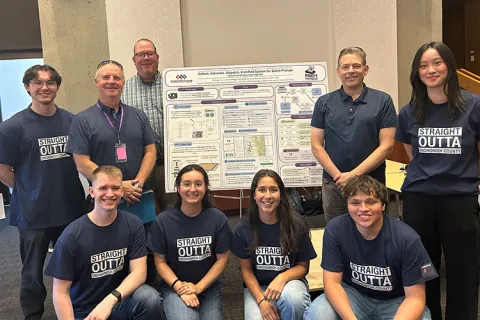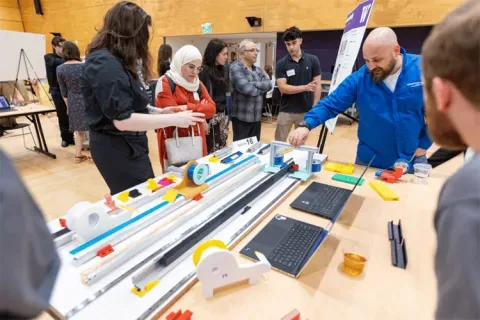Advanced Navigation and Positioning Corporation (ANPC)
Drone Detect: Wavefront disturbance detection
This student team worked to detect objects disturbing known radio frequency (RF) emitted wave-fronts. In particular, this student team worked to detect UAS drone objects flying through the emitter to receivers field of view space. There are several components to this development: - First, this student team worked to design a low-powered RF emitter with a chosen frequency or set of frequencies. This student team will also work to develop an analysis to determine the optimal frequency(s). Students will then work to design and develop an emitter using software-defined radio (SDF) technologies. The emitter module should constantly emit a known signal output for the receiver modules to detect, evaluate, and quantify. - Second, this student team worked to design and build the receiver module to receive the emitted signal, detect and monitor a defined characterization of that signal, and then identify and characterize perturbations in the signal due to encroaching objects or drones. There were multiple receiver modules with three being optimal for an introductory test. - Third, the student team worked to build monitoring software, the detection software with the ultimate goal of software able to correlate sequential detections between the different receiver nodes to identify target tracks through the airspace. The student team worked to analyze the types of drones that would be used in this local area detection system, as well as work to analyze signal quality factors. - This student team worked to begin the project with a Concepts Review where the desired systems capabilities and corresponding objectives and goals of the sponsor are presented. This student team will work to present the concept to be developed and to answer the team's “what” and “why” that drives the solution, i.e., the system under consideration. Pertinent program, regulatory, and/or procedural documents will also be reviewed at this time. The review is intended to provide a clear understanding of the objectives. - The first stage of this development was the System Requirements Review (SRR). In this review, the student team worked to present the top-level systems requirements for review, describe how they properly drive a design, and how those designs will be assessed and analyzed. The student team worked to present a preliminary schedule for the initial development at this time. This schedule was used to predict the effort required for the following preliminary design phase of the project. The Preliminary Design phase led to a Preliminary Design Review (PDR). In the preliminary design phase, this student team worked to investigate different design options, and a model and assessed to provide a trade study supporting the primary proposed solution(s) the student team came up with. The student team worked to define assumptions and risks to help select the final design. The PDR the student team worked to present included the findings of the studies, the requirements for the design and identification, a description of how those requirements would be tested, and a definition of the risks involved with each proposed option. The student team's performance was judged on the ability of the student team to adequately define, study, understand and present a solution. The desired outcomes this student team worked to achieve were analysis, models, preliminary design mockups, requirements, and test documentation that defined the designs that drove a Critical Design Phase of the project. ANPC expected that the student team would only be able to achieve a Preliminary design level of development in the time allowed, but designs were to be clear and solutions were to be clearly presented with trade-offs that allow for the final design to be properly scoped.
Faculty Adviser(s)
John Reece, Electrical & Computer Engineering
Related News

Mon, 10/13/2025 | UW Mechanical Engineering
Capstone collaboration leads to award
An ME capstone team received first place for its energy audit of the UW School of Social Work building.

Thu, 07/17/2025
UW engineering students develop smart ballot solution
UW engineering students develop smart technology solution to improve ballot collection for Snohomish County.

Mon, 07/07/2025 | UW Mechanical Engineering
Capstone creations
Students displayed innovative capstone design projects at the 2025 expo.

Fri, 09/20/2024 | UW Civil & Environmental Engineering
Smarter irrigation for a greener UW
A new project combines satellite data with ground sensors to conserve water and create a more sustainable campus environment.